#Agile Coach
Text
What’s Behind The Title?
During a recent dental appointment, the dental hygienist asked me what I did for a living. If I answered truthfully “I’m an Agile Coach”, I knew I would get a puzzled look and more questions. I was there on the clock for a cleaning and didn’t have time to explain. Besides, it would’ve been hard to do with dental instruments in my mouth.
So, I wimped out and said,
“I’m a Management…

View On WordPress
0 notes
Text
Understanding the Role of an Agile Coach
Becoming a certified Agile coach opens doors to a rewarding career path in guiding teams and organizations towards successful Agile transformations. With Tandem Coaching Academy’s ICAgile ICP ACC course, aspiring coaches gain invaluable insights into Agile principles, coaching ethics, team dynamics, and leadership skills. This article delves into the multifaceted role of an Agile coach, shedding light on the diverse responsibilities and competencies required to excel in this field.

The Agile Coach: Catalyst for Change
Agile coaches serve as catalysts for organizational change, facilitating the adoption and implementation of Agile methodologies. They work closely with teams and stakeholders, fostering a culture of collaboration, transparency, and continuous improvement. By providing guidance and support, Agile coaches empower teams to embrace Agile values and principles, thereby enhancing productivity and delivering greater value to customers.
Navigating Complex Team Dynamics
One of the key responsibilities of an Agile coach is navigating complex team dynamics. Teams may encounter various challenges, including communication barriers, conflicting priorities, and resistance to change. Agile coaches leverage their interpersonal skills and emotional intelligence to foster trust and cohesion within teams. Through effective communication and conflict resolution techniques, they help teams overcome obstacles and achieve their goals.
Driving Organizational Leadership and Innovation
Agile coaches play a pivotal role in driving organizational leadership and innovation. By working closely with leadership teams, they advocate for Agile practices and champion a culture of experimentation and learning. Agile coaches encourage leaders to embrace servant leadership principles, empowering them to support and enable their teams rather than micromanage. Through coaching and mentoring, Agile coaches help leaders cultivate a growth mindset and embrace continuous improvement.
Conclusion
Becoming a certified Agile coach opens up exciting opportunities to make a significant impact on teams and organizations. With Tandem Coaching Academy’s ICAgile ICP ACC course, aspiring coaches gain the knowledge and skills needed to excel in this dynamic field. By understanding the role of an Agile coach as a catalyst for change, navigator of complex team dynamics, and driver of organizational leadership and innovation, individuals can embark on a fulfilling journey towards becoming effective Agile coaches.
1 note
·
View note
Text
When HR partners up with Agile to run a Kaizen program

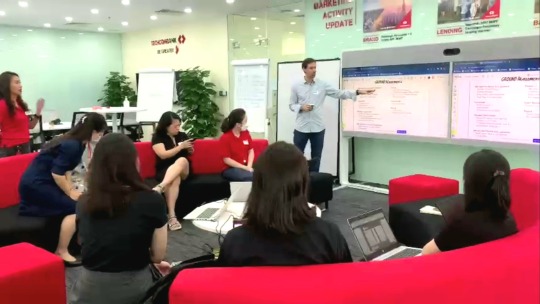
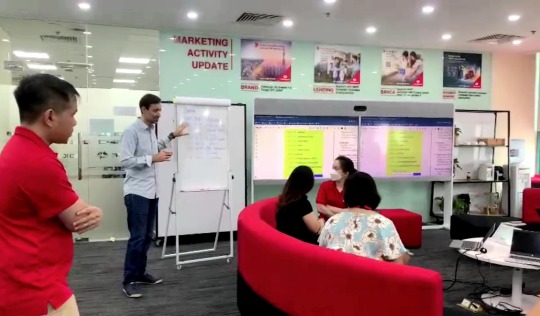
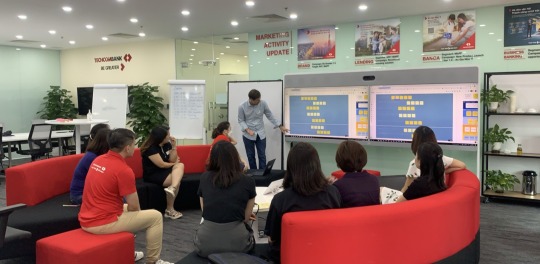

August 2022, The Agile Center of Excellence partnered with Human Resource (incdluing the fantastic Ha Bui) to ensure smooth onboarding and active engagement in the WeKaizen development program.
-------------
Let's first have a look at WeKaizen's missions:
Empowering Employees:
Enhance Kaizen capabilities through Lean Production training, equipping all employees with the essential skills and mindset to drive continuous improvement.
Cultivating a Kaizen Culture:
Promote implemented Kaizen initiatives, fostering instant reward and recognition to incentivize participation and celebrate success
--------------
Let me precise that WeKaizen program is open to all Techcombank employees, encompassing everyone from top managers to regional relationship managers. WeKaizen program encourages participants to identify areas for improvement in internal processes and even discover simple ways to boost employee happiness:
No problem is too small or too big, isn't it?!
Here are the key areas where we provided crucial support:
Kaizen Practice - Collaborative Problem-Solving
Teams brainstorm and collaborate to devise solutions (Kaizen) for specific team challenges.
Kaizen Fair - Showcasing Excellence
Recognizing and rewarding outstanding individuals and teams with the most impactful Kaizen initiatives.
The HR team actually entrusted our members with their foundational coaching skills to guide participants in refining their ideas and achieving success.
In a coaching point of view, our success hinges on our ability to help participants transform their initial ideas into concrete concepts with actionable plans.
Despite considerable workload pressures facing our team with delivering the bank's core functionalities, the Head of Transformation and the new Head of Agile approached me with this request.
Partnering with my experienced colleague Son Le and the energetic Hien Nhu, they were the perfect fit! Togehter we embarked on this initiative, initially with some reservations about tackling complex problems with diverse groups for next following Saturdays...
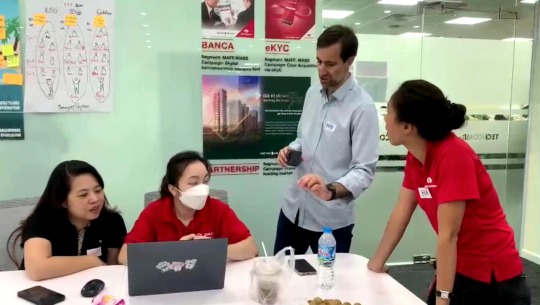
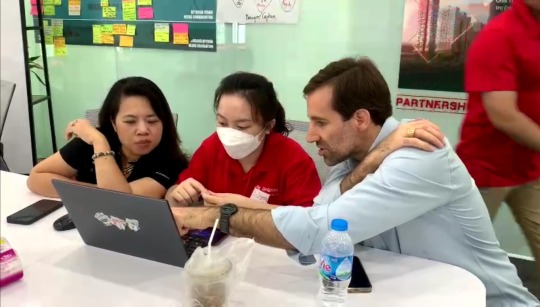
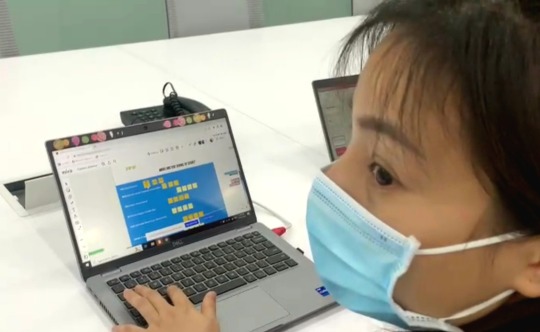
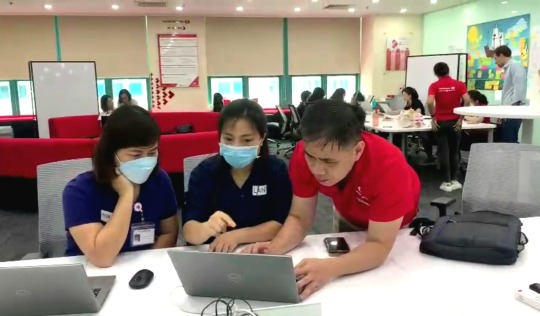
The experience proved to be absolutely rewarding and engaging!
While numerous pre-existing canvases (Lean Startup Canvas, Product Canvas, Team Canvas, etc.) existed, I, after thorough research, proposed using a novel canvas tailored to encourage emergent concepts through Design Thinking methodologies.
The Proposed Canvas:
Inspired by a Business Case Canvas and a Product Vision template, here's the structure we suggested for facilitating the exercise:
Why?
Identify the problem/opportunity and the overall vision to address it.
What?
Describe the potential solution to tackle the identified issue.
End User?
Define the individuals most impacted by the problem or the prime beneficiaries of the solution.
What the Success looks like?
Outline the idealistic impact on users and the market if the solution is implemented.
Success Measurement:
Determine the key metrics to gauge success.
Timeline & Milestones:
Establish a feasible timeline and key milestones for achieving the desired outcome.
How-To:
Define the essential steps to bring the solution to life.
Who's Involved?
Identify the necessary team members or profiles required for implementation.
Stakeholders:
Pinpoint sponsors and individuals accountable for the initiative's success.
Resources:
Determine the necessary technical components and procurement needs.
Constraints:
Acknowledge and understand the current limitations.
Risk Assessment:
Identify and address potential risks.
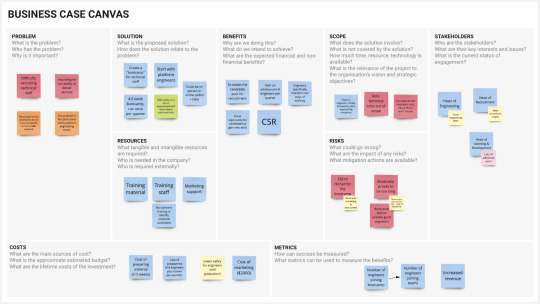
Through collaborative refinement sessions with various groups, our team successfully enhanced over 20 Canvases. Additionally, we equipped participants with effective pitching skills to present their ideas within a five-minute timeframe. Remember that the most impactful Canvases will be presented to the bank's divisional heads.
We were excited to witness the continued success of the WeKaizen program and the positive impact it is having on Techcombank!
#productvision#Kaizen#banking#coaching#agile consulting#agile coach#team coaching#techcombank#vision#scrummaster
0 notes
Text
Is my job safe against AI? ChatGPT vs Scrum Master & Agile Coach
In an era defined by rapid technological advancements, the roles of Scrum Masters and Agile Coaches are not immune to the impact of artificial intelligence (AI). As organizations strive to optimize their processes and embrace agile methodologies, it’s natural to wonder if these roles are at risk. However, a closer look reveals that Scrum Masters and Agile Coaches possess unique qualities that are…
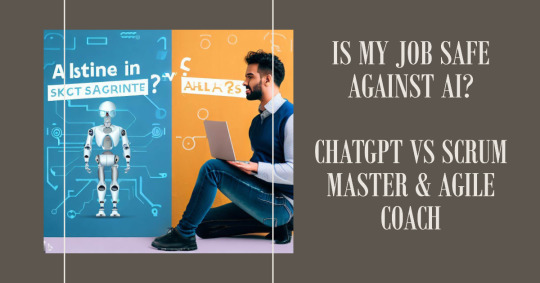
View On WordPress
#adaptability#Agile Coach#Agile Methodologies#Agile Processes#Agile Transformation#AI Impact#Automation#Continuous Improvement#Data Analysis#Emotional Intelligence#Human-Centered#Interpersonal Skills#leadership#problem-solving#Scrum Master#Team Collaboration#Technology
0 notes
Text
Acquire the Best Strategy of Agile Coaching You Deserve Only with Benzne Consulting
In today's rapidly changing business landscape, organizations need to be agile and adaptive to stay ahead of the competition. This is where agile coaching plays a crucial role. And when it comes to finding the best strategy for Agile coaching, look no further than Benzne Consulting.
Benzne Consulting has established itself as a leading provider of agile training and consulting services. With their extensive experience and deep knowledge in agile methodologies, they offer customized solutions that meet the unique needs of organizations across various industries.
Benzne Consulting: The Leading Agile Training Company to meet your needs
When it comes to Agile Training Company, Benzne Consulting stands out as the industry leader. With their deep expertise and comprehensive approach, they provide customized solutions tailored to meet the unique needs of organizations across various sectors. Their experienced trainers offer a wealth of knowledge in agile methodologies, empowering teams and leaders with the skills necessary for success in today's dynamic business environment. Whether you prefer on-site workshops or virtual sessions, Benzne offers flexible delivery options that fit your schedule. Choose Benzne Consulting as your trusted partner in unlocking the full potential of agility within your organization.
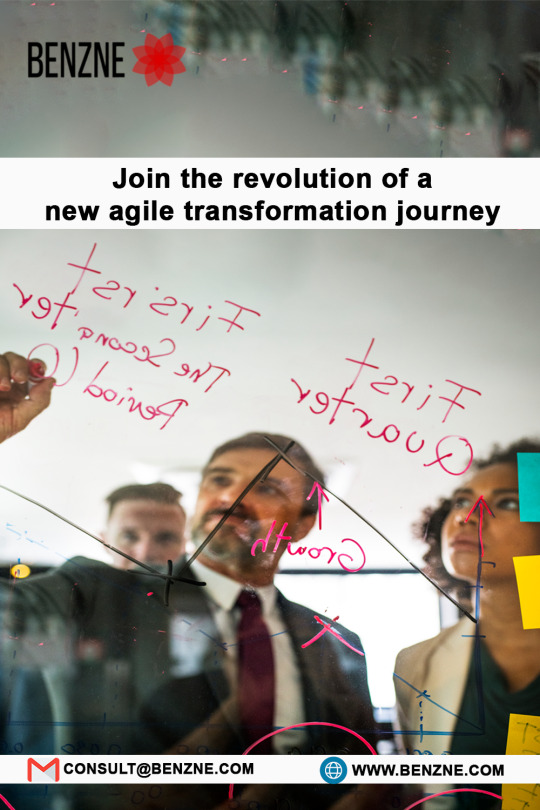
Why Choose Benzne for Agile Consulting?
Expertise and Experience: At Agile Consulting with Benzne boasts a team of highly experienced trainers who have worked extensively in diverse industry domains. Their expertise allows them to understand the specific challenges faced by different organizations and tailor their coaching approach accordingly.
Comprehensive Approach: At Benzne, they take a comprehensive approach towards agile coaching. They go beyond just teaching frameworks or methodologies; instead, they focus on instilling an agile mindset within teams and leaders. This includes fostering collaboration, promoting iterative development cycles, and empowering individuals to embrace change.
Customized Training Programs: Recognizing that every organization is unique, Benzne designs tailored agile training programs based on individual requirements. They work closely with clients to understand their current practices, challenges, and goals. This enables them to deliver training sessions that address specific areas for improvement and align with the company's overall objectives.
Flexible Delivery Options: Understanding that flexibility is key, Benzne provides multiple delivery options for their training programs. Whether you prefer on-site workshops, virtual sessions or blended learning approaches, you can choose what works best for your organizational needs. With this flexibility, Benzne makes sure that trainees can conveniently access high-quality Agile coaching regardless of geographical constraints or time limitations
Proven Track Record: Benzne has a proven track record of successful agile implementations and satisfied clients. Their coaching programs have helped numerous organizations achieve increased productivity, improved collaboration, and faster time-to-market. The positive testimonials from happy clients are a testament to the effectiveness of their Agile coaching strategies.
Conclusion
When it comes to acquiring the best strategy for Agile coaching, Benzne Consulting is undoubtedly a top choice. With their expertise in the field, comprehensive approach, focus on customization, and flexible delivery options, you can trust them to guide your organization towards becoming more agile and achieving sustainable success. So don't settle for anything less than what you deserve. Choose Benzne Consulting for your Agile coaching needs and unlock your organization's full potential.
0 notes
Text
What is the Role of an Agile Coach
Agile coaches are typically from project management, product management, information technology, or software development backgrounds. They also often have extensive knowledge of various Agile approaches like Scrum, Kanban, and the Scaled Agile Framework (SAFe). They are typically skilled in coaching and mentoring and can advise and assist others in determining the best answers to their problems. They help train corporate teams in agile methodology and manage the growth of agile teams to achieve optimal organizational outcomes. They are in charge of assisting teams through the implementation process and encouraging employees and executives to adopt the elegant style. Agile Coach Certification can increase your marketability and let companies know that you have the fundamental skills expected of professionals.
The ultimate purpose of the agile coach is to provide agile teams with the knowledge, tools, and training to use agile fully. Agile is, first and foremost, a culture shift. It is a seismic movement away from command-and-control management approaches and toward collaborative, team-focused cultures. While having Agile Coach Training you will get to know about how to train leaders & encourage the entire team. Nurturing an organization through this transition demands someone with extensive agile experience and solid persuasive abilities.
Agile is simple to learn but challenging to master, which causes many executives to struggle during the transition. Most of these issues arise from inaccurate assumptions about how simple it is to implement Agile inside a team, department, or entire firm.
You should have as much familiarity as you can with how Agile is implemented on various teams as an DA coach. Scrum is popular because it appears to provide a one-size-fits-all solution that is simple to adopt. However, every circumstance is unique, and many project managers find themselves in situations where they have adopted all of the necessary Agile procedures. Still, something seems to need to be fixed. Agile may appear to function in one business unit but not another.
Because there is no one-size-fits-all method for agile adoption, each firm will have unique requirements throughout the process. To assist in meeting these various demands. There are primarily three categories of agile coaches based on the needs of the companies:
Technical coaches: Technical coaches work directly with developers and often have coding and integration expertise because they are required when dealing with the dev team.
Process/management coaches: Process or management coaches are mainly concerned with developing leadership for agile teams and ensuring that the agile technique is successfully implemented.
Non-directive coaches: Non-directive coaches provide specialized help to individuals or organizations tackling specific agile-related difficulties.
Some firms may require an Agile Coach with a solid technical background, but others may need someone who can persuade leadership to embrace change. As firms continue to implement agile methodologies, some may choose to engage an agile coach for one-time concerns or queries.
What do Agile Coach Do?
Agile coaches assist in training corporate teams on agile methodology and manage the growth of agile teams to achieve optimal organizational outcomes.
According to the business's demands, an Agile Coach's tasks range from observing someone complete a job to performing it themselves, which are vital to success.
Hands-on expert: The coach should be more hands-on when people need clarification about where and how, to begin with, these new tactics. He will lead and execute Agile methodologies directly and train teams and organizations.
Coaches and teachers: Provide knowledge and solutions to Agile challenges. Deals with the organization as a whole or with specific portions of it. An excellent coach provides individuals with the resources they need to flourish independently.
Advisor: This is when domain knowledge comes into play. When a team encounters a technical stumbling block, a coach in this area can assist them in overcoming it, typically working closely with a team throughout the process.
Counselor: Active listening is essential for any Agile coach, just like any effective therapist. A coach in this capacity fosters a secure atmosphere in which conflicts over implementing Agile principles, for example, may be discussed freely and openly. A counselor is needed if someone is unclear about their position or any aspect of the working process.
Facilitator: Rather than providing specific answers and solutions, a coach in this capacity assists team members in discovering these on their own.
It should be noted that when an Agile coach works with a team, these responsibilities may shift and evolve. An effective Agile coach adapts their job and approach to the task, group, and individual with whom they collaborate.
1 note
·
View note
Text
cheerleaders 🤝 equestrians (but specifically horse girls): your sport not being taken seriously by other people and being treated like a joke
#deity dialogue#when I was in middle school my computer teacher was also a football coach and would have ‘banter’ with the cheer coach (who was also an#assistant teacher for my math class btw she was so sweet she helped me a lot in class and also made me a bow which was stolen from me :( )#about how ‘football was a real sport and cheerleading wasn’t’ LIKE ARE YOU KIDDING ME#jsut because cheerleaders look cute and are peppy and more often than not girls and women you don’t take anything they do seriously#do you understand the strength and agility and flexibility needed to be a cheerleader do you see the shit they’re doing and you have the#gall not to respect what they do as a sport??? i wasn’t a cheerleader but a few of my friends were and I respect them so much that shit must#have taken so much of everything#obvs I’m not covering the full scale of what it takes to be a cheerleader cause again I wasn’t one but like I’m so pissed whenever people#have the audacity to act like it’s not a serious sport and I’m mad at the same for equestrians as well.#Also generally I hate people who think cheerleaders are inherently awful and bitches like y’all shouldn’t generalize just because some#people in a group are mean or popularly portrayed as mean doesn’t mean it’s true my friends from school were sweet to literally everyone so#can it. this isn’t me like dismissing anyone who’s been bullied by anyone but don’t like assume everyone is terrible thanks bye#it’s the misogyny and we all know it :/ it affects men in the sports as well because if you’re a male cheerleader you’re treated badly and#it’s the misogyny and we all know it
15 notes
·
View notes
Text
IDK I do think a lot of my problems would be fixed if I moved somewhere where the average high temperature was never above 90.
#HEADS UP IM TALKING ABOUT WEIGHT IN THE TAGS!#it's so hot I can't do anything outside and it doesn't have me feeling great about my body#my knee is the worst its been for A WHILE#I don't feel like im improving in agility bc I can't fucking work on it rn and my agility trainer has life happening#and this is the second time I feel like ive been ghosted by her and I feel like shit for deciding to go back to that facility because#this is far from the first time that this has happened and more stuff has come into light about the shit they pull there which I haven't#personally seen but the vibes have been there for a while ive got six more weeks and eight more classes and im washing my hands of the plac#but that leaves me without a trainer or facility again bc im not the biggest fan of my works agility location#and I really think I need a coach more than a trainer bc I can do the things but I need another set of eyes on the problem#but I can't afford a coach bc I have to pay of 20k in debt by November and god that fucking deadline is getting me stressed
9 notes
·
View notes
Text
#certified agile coach#agile coaching#enterprise agile coach#scrum master agile coach#certified enterprise coach#atlassian jira training#atlassian training#confluence training#jira and confluence training#atlassian bitbucket training#atlassian classes#consultant#consulting
2 notes
·
View notes
Text
Our run at the Royal Show started out so good. She did 1-10 just fine then checked out. I don’t know why, it’s not clear to me. I’m guessing it was just stress accumulation? I don’t know why we lost connection, I was feeling really good until that point.
#dog agility#agility trial#I don’t know why I can’t get it together for trials#our training has been so good lately#haven’t had a bad session since I changed my training approach#but she still checked out in the trial#😞#people I helped coach have now got qualifications and I still have nothing#hate that I want this so bad
14 notes
·
View notes
Text

Srikanth Goduru's 5 Tips for Mastering Remote Projects
In an era where remote work has become the norm, mastering remote project management is essential for ensuring the success of teams and projects. Srikanth Goduru, a distinguished leader in the tech industry, shares his invaluable insights and strategies for navigating the challenges of remote project management effectively. Drawing from his extensive experience, Sri Goduru outlines five proven tips to empower remote project managers and teams to thrive in the digital workspace.
1. Embrace Agile Methodologies
Agile methodologies have long been heralded for their adaptability and flexibility, making them particularly well-suited for remote work environments. Sri Goduru emphasizes the importance of embracing Agile principles such as transparency, collaboration, and iterative development. By implementing Agile frameworks like Scrum or Kanban, remote teams can streamline their workflows, prioritize tasks effectively, and maintain alignment even across distributed locations.
2. Leverage Communication Tools
Powerful communication reclines at the heart of fortunate remote project management. Srikanth underscores the significance of leveraging a diverse array of communication tools to facilitate seamless collaboration among team members. From video conferencing platforms to chat applications and project management software, investing in the right communication tools can bridge the physical divide and foster a sense of connection and cohesion among remote teams.
3. Establish Clear Goals and Expectations
Clear goals and expectations serve as guiding beacons for remote teams, ensuring that everyone is aligned and working towards a common objective. Sri Goduru advises project managers to define project objectives, milestones, and deliverables upfront, setting clear expectations for each team member. By providing clarity and direction, remote teams can minimize misunderstandings, boost productivity, and stay on track to achieve their goals.
4. Foster Team Collaboration
Distant work can occasionally lead to tenderness of isolation and objectivity. Srikanth stresses the importance of fostering a collaborative team culture, even in virtual settings. Regular virtual meetings, brainstorming sessions, and virtual team-building activities can help remote teams forge strong bonds, cultivate trust, and enhance collective problem-solving abilities. By promoting open communication and collaboration, remote project managers can harness the collective intelligence of their teams and drive innovation.
5. Prioritize Work-Life Balance
Maintaining a healthy work-life balance is essential for the well-being and productivity of remote team members. Srikanth Goduru advocates for remote project managers to prioritize work-life balance by respecting boundaries, promoting flexible work schedules, and encouraging regular breaks. By fostering a supportive work environment that values employees' holistic well-being, remote project managers can mitigate burnout, enhance morale, and foster greater job satisfaction among their teams.
Conclusion
In conclusion, mastering remote project management requires a combination of strategic planning, effective communication, and a commitment to fostering a collaborative and supportive team culture. By implementing Srikanth Goduru's five proven strategies, remote project managers can navigate the challenges of remote work with confidence, empowering their teams to achieve success in the digital age.
0 notes
Text
Marco Toscano
Marco Toscano's approach to Agile coaching and training is unique and impactful. He believes in a practical, hands-on approach, helping teams not only understand Agile principles but also implement them effectively in their daily work. His training sessions are known for being engaging, informative, and tailored to meet the specific needs of each team or organization. Whether it's facilitating the cultural shift towards Agile methodologies or scaling Agile practices using frameworks like SAFe and LeSS, Marco's guidance is invaluable. His multilingual proficiency in German, English, Spanish, and Italian further enhances his ability to communicate and connect with a diverse range of clients, making his services accessible to a global audience.
0 notes
Photo


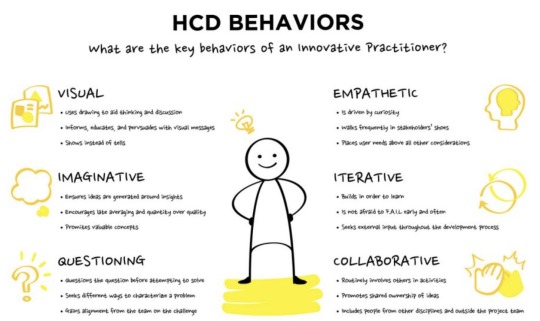

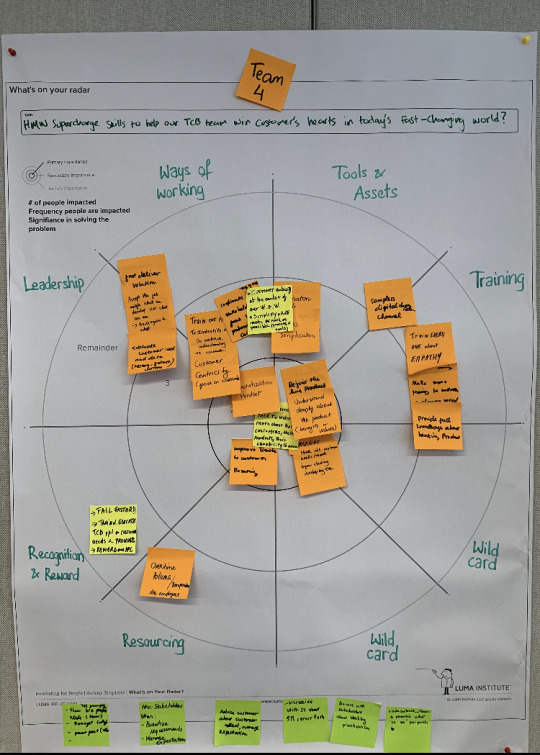
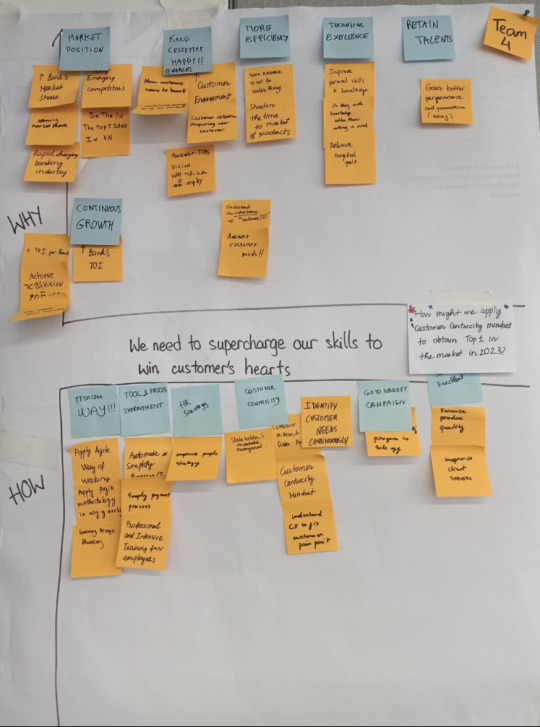

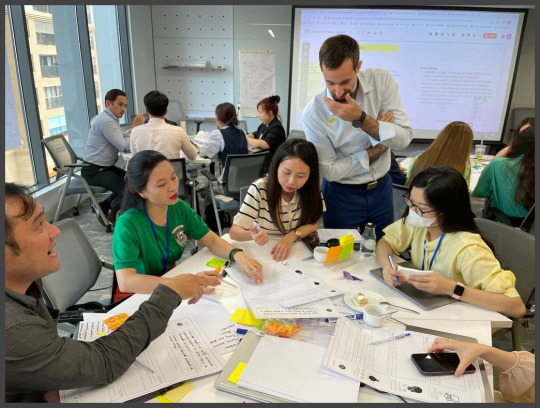


Deeper dive into Design Thinking tool box
In 2018, #StandardCharteredBank run multiple #LUMA system course.
This is was a 3 day deep dive on Human centered Design framework: trainees discovered, explored and practiced the Luma Toolset such as:
Interviewing, Walk-a-Mile immersion, Stakeholder Mapping, Experience Diagramming, Creative Matrix, Buy a Feature, Build your own, Concept Poster... so many interesting and practical methods that can and should be used at work.
Last week, my colleagues and I at TCB have enjoyed the Advanced Design Thinking training lead by Doodledesign.
After a first 2 days virtual training during Covid period in 2022, we could eventually enjoy a face to face session. Chris is and his team are awesome facilitators, this 2 days were very smooth and practical. Design Thinking offer a deep range of tools but we really focused on practicing few technics:
What's on your Radar?
Visualize the vote
Abstraction Laddering
Round Robin
Cover Story Mock-up
Critique - (or the art of receiving feedback!
Build your own
Of course we first reviewed the #DoubleDiamondofDesign, where these techniques are key tools of the journey from the Problem Space to the Solution Space.
We also had the opportunity to review the key design thinking facilitator attributes, where each trainee reflected on their strength and weakness.
My key reflection by the end of these 2 days are the following:
What is in for me as a Trainee?
• Which of the tools can I really use as transformation leader and Agile Coach?
• Which tool dare to practice in real situation with our challenging stakeholders?
What is in for me as Facilitator?
• What can I learn from Chris?
• What are the Facilitations skills I can grow?
• What are the tools, the wordings, the games I can adapt to our Coaching context in order to make our “clients” fully engaged.
Being myself a facilitator, having continuous coaching sessions, training every week our teams to embrace the Agile Mindset, attending this advanced Design Thinking training is a great opportunity to be in the trainees shoes, observe and learn! So please let me thank #Techcombank, Chris and all the participants (especially Group 4) for this opportunity.
Be ready Techcomers for the next advanced Agile training, cause we will improve based on our learning!
Cheers
2 notes
·
View notes
Text
In project management, Scaled Agile Framework has become a trending topic. Many of the world’s most successful companies want to scale Agile across their whole enterprises. However, despite its current popularity, Agile project management is not a new concept. Agile’s beginnings date back decades and have been used to assist teams to succeed in fast-paced occupations where the nature of work is continuously changing. Agile was officially founded in 2001, although its roots date back decades.
0 notes
Text
Experimenting With Spotify Inspired Chapters
How do you see your job?
As a means to an end? Something you do to put food on the table and to make a living?
As an end in itself? Something you do to develop and grow yourself?
Both 1 and 2?
How you see your job is a good indicator of how satisfied you are with your job.
If you answered 1, your job satisfaction is probably low, and you’d jump at the chance to change jobs.
If you answered…

View On WordPress
0 notes
Text
A Beginner's Guide To Agile Planning & Estimation
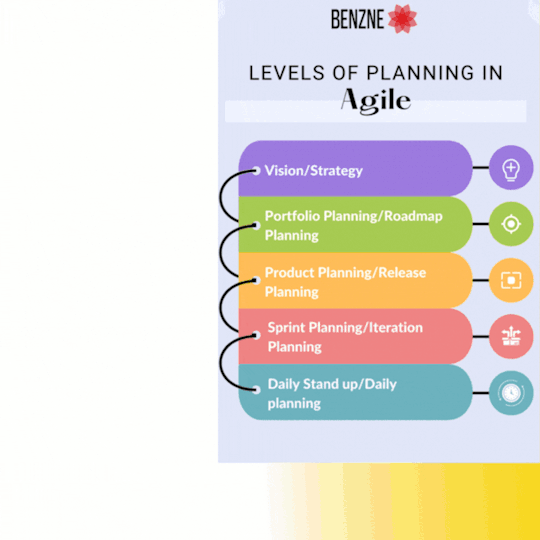
Velocity is the quantity of work a team completes in a given time. Hours, sprints, story points, and so on are common work units. Velocity is calculated at the end of the Sprint by adding the Points for all fully completed User Stories.
https://benzne.com/a-beginners-guide-to-agile-planning-estimation/
1 note
·
View note